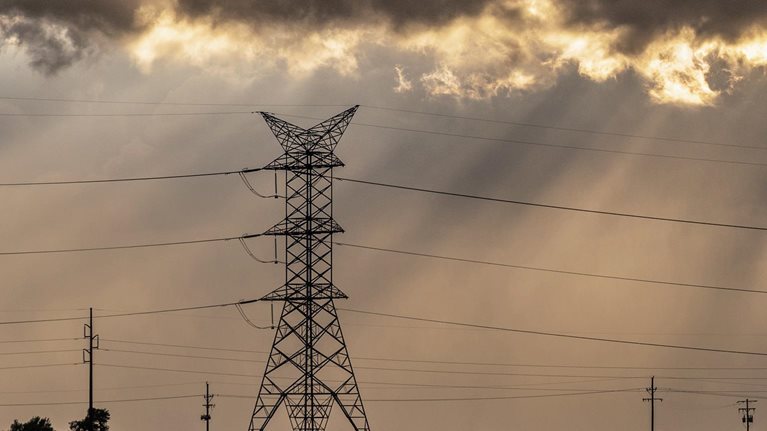Over the past few decades, Colorado has taken significant steps toward carbon neutrality. Since 2010, the state has more than tripled the amount of electricity it generates from renewable sources: renewable energy now represents 30 percent of the state’s total generated electricity.1 Colorado also ranks among the top ten states for grid modernization, cleantech venture capital investments, and per capita electric-vehicle (EV) adoption, with 58,700 battery-powered vehicles on the road.2
This progress is just the beginning. Colorado has ambitious goals to cut greenhouse-gas (GHG) emissions, and its efforts could position it as a national leader in decarbonization. Scientists have determined that limiting the Earth’s warming to 1.5°C above preindustrial levels is necessary to avoid the most dangerous and irreversible effects of climate change.3 This would require reaching net-zero emissions globally by 2050 and a 50 percent reduction in emissions (compared with 2010 levels) by 2030.4 The analysis forming the basis of this article, conducted in 2022, shows that a net-zero pathway in Colorado not only would support important levels of decarbonization but could also become a pillar of economic growth and sustainable, broad-based job creation in the state—creating 190,000 jobs (60 percent of them long-term operational roles) and contributing $135 billion in total gross value added (GVA) by 2030.5
Achieving this won’t be easy or cheap. Compared with most states, Colorado has higher emissions in hard-to-abate sectors. For example, our analysis finds that the state’s oil and gas industry contributes a higher-than-average share of the state’s total emissions (16.1 percent in 2019 versus an average of 4.6 percent nationally).6 Leaders in the state will have to make unprecedented changes—moving faster, innovating more strategically, and accelerating their investments. Our analysis shows that up to $80 billion in new capital expenditures will be required across Colorado’s economy from 2022 to 2030, with an additional $11 billion in annual operational costs. Over the next ten years, most of this spending will go toward clean energy, with the transportation sector getting a bigger share of the pie between 2030 and 2050.
This decade is critical. Immediate action will signal leadership to other states, and spending that occurs within the next decade could have a catalytic effect on economic growth and job creation (Exhibit 1). In addition, companies that are first movers will be best positioned to help create an equitable transition that promotes job growth and economic opportunities for a wide range of Coloradans.

The risks to Colorado of global climate inaction are significant. If warming increases 3.5°C by 2100, for instance, the impact on water availability could be devastating. Agriculture yields would decline dramatically, and wildfire risk would increase in the state, threatening the underlying natural and economic systems on which much of the state’s economy is based.7 Additionally, if the state fails to adapt to the energy transition, significant job losses could occur as fossil fuel facilities are retired.
This article outlines the scope and scale of the opportunity, focusing specifically on the private sector’s ability to act. While some steps that Colorado needs to take are consistent with broad recommendations for the United States (such as the rapid electrification of road transport), we quantify this impact on a state-level scale and identify areas in which Colorado may need to invest extra attention, such as direct air capture (DAC) to offset emissions from the hard-to-abate sectors that are prominent in the state. We also provide a sector-by-sector breakdown of Colorado’s emissions profile and lay out four high-impact levers that some of Colorado’s major industries could pursue.
The private sector’s role in decarbonization: A commitment from every sector
Climate policies at both the state and federal levels have already catalyzed action. In 2021, Colorado created its GHG Pollution Reduction Roadmap,8 a pathway to achieve GHG reductions of 50 percent by 2030 and 90 percent by 2050.9 At the federal level, the passage of the Inflation Reduction Act (IRA) in 2022 provides a broad range of subsidies for decarbonization efforts. The bill’s nearly $400 billion in funding and incentives for clean energy, transportation electrification, climate-smart agriculture, and other carbon reduction efforts are estimated to result in 40 percent lower US emissions by 2030, compared with 2005.10
Nearly all these efforts are intended to dovetail with support, leadership, and resources from the private sector. Because the sources of Colorado's emissions are spread widely across its economy (Exhibit 2), many industries will have to commit to decarbonization. Should one key sector lag behind, others would need to respond by accelerating their abatement efforts, which could potentially stretch the bounds of technical feasibility.


To drive decarbonization, the following sectors will have to take action to bend their emissions curves:
Agriculture (9 percent of Colorado’s emissions).11 A net-zero transition in agriculture will require changes in how food is grown and the types of foods produced. Different soil management practices, a reduction in fertilizer use, and the adoption of regenerative techniques can all reduce emissions. Greater consumer demand for alternative proteins can reduce the consumption of beef and other animal products, significantly lowering methane emissions from livestock. (Methane has a short-lived yet powerful impact. It starts to break down after two decades in the atmosphere, but its warming impact is 25 times greater than that of carbon dioxide.12)
Buildings (10 percent). Investment in insulation, efficient lighting, and the switch from natural gas–powered appliances to electric ones (such as heat pumps) can drive decarbonization. Measures to install distributed generation (such as rooftop solar) can also help.
Industry (38 percent). Methane leaks from oil and gas wells and direct emissions from manufacturing make up the largest portion of this sector’s emissions, which account for a much higher proportion of Colorado’s emissions than the national average. Investments that can drastically reduce emissions in this hard-to-abate sector include methane abatement, the use of clean fuels such as hydrogen, the electrification of processes such as steel smelting, and carbon capture, utilization, and storage (CCUS) at the point of emission.
Power (23 percent). Sourcing electricity from renewables, primarily solar and wind—in addition to investments in long-duration energy storage and grid modernization—is an essential decarbonization lever. However, since electricity demand is expected to grow, meeting only current energy demands with renewable production isn’t enough to reach Colorado’s decarbonization goals. To achieve 1.5°C targets in Colorado, our model shows that a total of 29.5 gigawatts of new solar and wind energy could be required between 2022 and 2050.
Transport (21 percent). Through investments in several areas, road transport can achieve net zero by 2050, and air travel can cut emissions by 85 percent by 2050. These investments include purchases of EVs and construction of charging infrastructure, the development of green hydrogen as a fuel for the trucking and aviation sectors, and the production of sustainable aviation fuels (SAF). In addition, building housing along transit lines, promoting density in new developments, and making mobility options affordable and accessible can reduce vehicle miles traveled, thus activating another powerful tool to reduce emissions.
The required removal of existing carbon
All the ambitious decarbonization approaches noted above still leave Colorado short of its 2050 net-zero goal by 25 metric tons of CO2 equivalent. Our calculations show that roughly 58 percent of these unabated emissions will be from industry, 23 percent from agriculture, 13 percent from power, and 3 percent each from buildings and transportation (Exhibit 3). Since these emissions will remain hard to abate, achieving net zero will entail the removal of CO2 or other GHGs already in the atmosphere. This removal can occur through either DAC technologies or natural solutions, such as planting trees and implementing agricultural practices that sequester carbon in the soil.
DAC technologies can be mechanical or chemical solutions that extract CO2 from the air and store it underground or use it in products such as carbonated beverages. The ability to do this at scale requires a region to have high deployment of renewables (so that clean energy can be used for the process), proximity to transport networks such as pipelines, and access to geologic storage. Colorado meets all of these criteria. Thus, the state has the capacity to become a carbon storage hub.
Natural solutions for sequestering carbon involve the protection and regeneration of assets such as forests, oceans, soil, and wetlands. Collectively, six main natural climate solutions are capable of sequestering 6.7 metric gigatons of CO2 a year globally (in an economically feasible way), and three of them are opportunities for Colorado: reforestation, planting cover crops on farms, and planting trees in cropland.
Four high-impact levers for the private sector
Although many Colorado companies have already established decarbonization targets, opportunities exist for the private sector to go beyond internal commitments and work collaboratively to help Colorado achieve a 1.5° pathway ambition (Exhibit 4). There are many possible avenues for this. In addition to thought leadership and direct investments, the private sector can work together to support climate action across the value chain by incubating early-stage climate technology, developing finance mechanisms such as high-quality carbon credits, and building markets through long-term purchase agreements. The business community can also have an impact by informing policy, investing in transition-enabling infrastructure such as pipelines and EV-charging stations, and training its workforce in skills that will be needed for high-demand jobs.

We identified four high-impact areas in which engagement from the private sector could meaningfully accelerate decarbonization. Together, these levers account for as much as 60 percent of the emissions reduction needed by 2030 (compared with 2022 levels).
1. EV public charging
In addition to being a current leader in EV adoption, Colorado has set ambitious goals for the future: 940,000 EVs on the road by 2030 and 100 percent of new sales coming from zero-emission cars and light-duty trucks by 2035.13 Achieving this adoption rate could result in a 20 percent reduction in emissions from the transportation sector by 2030 and will help chart a path toward zero vehicle emissions by 2050.
To support this, a bigger and more robust network of affordable and accessible public charging stations is needed. When considering whether to buy an EV, consumers cite the availability and accessibility of charging infrastructure as the second-most important factor after price.14 The substantial build-out of new charging stations across Colorado could provide an economic boost for the state, supporting $24 billion in GVA by 2030.
The private sector can support investment in EV-charging infrastructure through thought leadership, the development of new business models, and the installation of chargers at their facilities. For example, in Minneapolis–Saint Paul, Xcel Energy worked with the not-for-profit car-share network HOURCAR to promote EV use among underserved, lower-income communities. The partnership, known as Evie Carshare, placed 70 “EV Spot” charging stations across Minneapolis and Saint Paul in 2022, many of them at affordable-housing sites, and paired them with electric car-share vehicles. In 2021, 25 percent of users in the pilot program had incomes under $29,000. HOURCAR hopes that by 2026, 50 percent of its user base will be people of color and 40 percent will be “very low-income members.”15
2. Sustainable aviation
As a hard-to-abate sector, the aviation industry is still in the early stages of its emission reduction efforts. These efforts center around investments in SAF in the short term and investments in alternative propulsion technology in the long term. Our analysis finds that investments by airlines, jet fuel makers, private equity firms, and government agencies could support an 87 percent reduction in aviation’s CO2 emissions in Colorado by 2050. They could also support the addition of roughly 13,000 jobs and $9.1 billion in GVA annually for the state’s economy by 2030.
Industry collaborations can be valuable. For example, at the San Francisco International Airport, ten airlines and fuel producers set up a working group in 2018 to promote the use of SAF. The group successfully lobbied for the inclusion of SAF in the California Air Resources Board’s Low Carbon Fuel Standard (LCFS), which enabled access to funding from the state’s market-based tradable credits system. Through December 2021, the airport has received nearly five million gallons of blended SAF, primarily imported from Europe.16
3. Green hydrogen
Because nearly one-third of hard-to-abate sectors could benefit from hydrogen energy to meet their decarbonization targets, increased production of this resource is critical to achieving net-zero emissions in Colorado. The state is uniquely positioned to benefit from and become a leader in the build-out of hydrogen, particularly green hydrogen, which is produced using renewable energy. Colorado has an ample supply of clean energy to support the production of green hydrogen, an extensive infrastructure of pipelines to transport it, concentrated centers of demand to consume it, and high-quality research institutions to help advance the technology.
Private-sector companies in Colorado can incubate novel hydrogen technologies, convene key stakeholders, and fund small hydrogen production projects. A hydrogen hub developed in Houston offers a potential model.17 In 2020, the Greater Houston Partnership and the Center for Houston’s Future convened a group of more than 50 companies and research institutions to promote the development of green hydrogen. The group funded and published detailed research outlining the scale of the opportunity and advocated for the state to apply for $8 billion in federal funding. Companies from this group have come together to form the HyVelocity Hub, which has applied for federal funding. Today, the Houston region produces and consumes a third of the nation’s hydrogen and has more than 50 percent of the country’s dedicated hydrogen pipelines. By 2050, it is projected that Houston’s hydrogen economy will contribute to 180,000 jobs and $100 billion in Texas GDP growth, as well as 220 metric tons of carbon abatement.18
A similar full-scale green-hydrogen hub in Colorado could support rapid, cross-sector decarbonization, particularly in transportation, and become an economic driver for the state. Our analysis finds that by 2050, hydrogen could support $65 billion in GVA, with green-hydrogen jobs helping to fill the gap left by the decline of Colorado’s oil and gas industry.
4. Carbon capture, utilization, and storage
Storing CO2 underground or preventing it from getting into the air in the first place can have a big impact on Colorado’s emissions. The state’s geology is ideal for underground storage, and networks of existing oil and gas pipelines could be used to transport concentrated CO2. A total of 43 percent of Colorado’s emission abatement by 2050 could come from CCUS technology, much of it in hard-to-abate sectors like ethylene production and oil and gas.
Similar to hydrogen, a CCUS hub can be an effective way to convene key carbon emitters, facilitate the development of markets, support the purchase of DAC credits via advanced offtake agreements, and promote policies that offer incentives for the building of necessary infrastructure. Such a group could enable Colorado’s power and industrial sector to reduce its emissions by 44 percent by 2030 and 132 percent by 2050, according to our model. It could also be an economic driver for the state, supporting $10.2 billion in GVA by 2030 and creating 44,000 construction jobs.
The Houston CCS Alliance, for instance, which includes 14 oil and gas, chemical, and energy companies, aims to capture and store 50 million metric tons of CO2 per year by 2030 and 100 million by 2040, making the city a global leader in carbon capture and storage.19 The partnership could enable tens of thousands of new jobs and protect existing ones that are important to Houston’s economy.
Decarbonization is critical to Colorado’s future environmental and economic vitality. The time for the private sector to bring its resources and leadership is now. Investments in EV adoption, sustainable aviation, hydrogen production, and carbon capture can be a catalyst to help the state become a decarbonization leader and achieve net-zero emissions by 2050.


